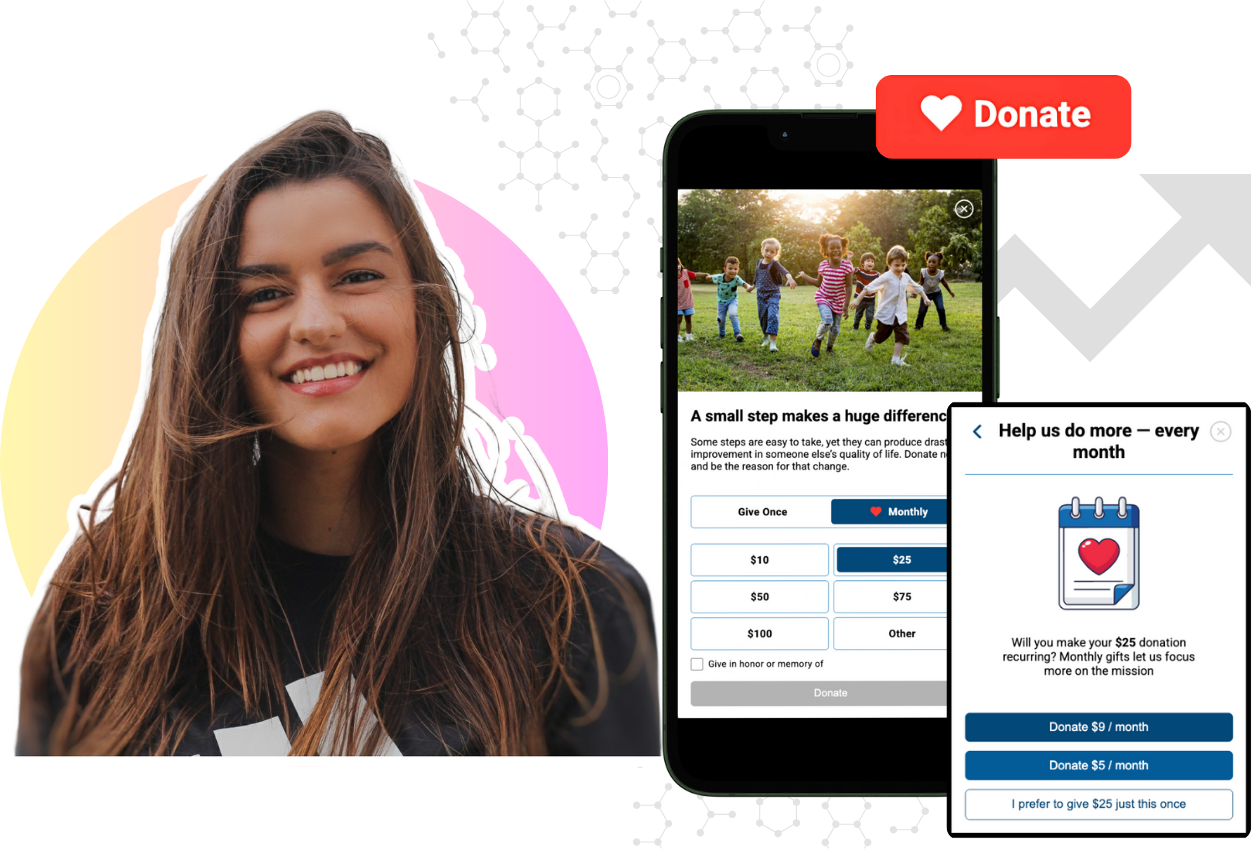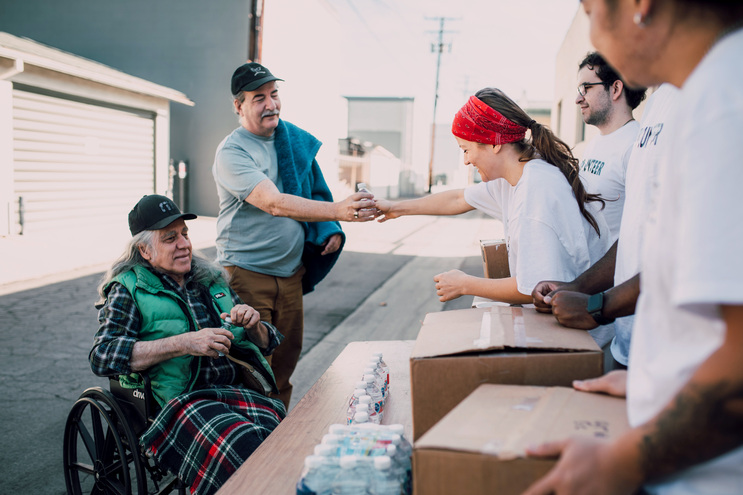Why Should NPOs be Donor-Centric?
While it may not be “news,” recent data on giving in America paints a troubling and persistent trend. Reports show that fewer than half of American...

Mobile-First Pop-Up Donation Form
Launch mobile-first pop-up forms in minutes, use built-in tools to capture more donations, and optimize the giving experience—no dev team required.
New to online donation pages for your nonprofit? Start here.
Donation page A/B testing - no science degree needed.
Keep your donation page loading fast - and drive higher conversions.

The 4 Types of Online Donation Experiences
89% of donors leave without giving. Learn how to use the right donation form to close the gap and boost conversions.

The busier and more crowded our lives become, the greater the gap between what remains important to us and all the other things seeking our attention. Increasingly, we must prioritize how and where we spend the limited time we have in our day-to-day lives. In other words, we’re continually pressed to zero in on what matters most to us. And what matters most are the things we truly care about.
It’s beyond gratifying when a donor feels a clear, strong connection to a cause and knows they are contributing to bringing about needed change. For today’s nonprofits, operating amid so much noise and distraction, reminding donors of what they truly feel connected to, and reminding them of the depth of their commitment, is a cornerstone of sustainable giving.
For too long, NPOs have been practicing what I would describe as episodic giving. Once a year, maybe twice, extended periods of absence are suddenly punctuated by a request for money. Many nonprofits don’t necessarily realize it, but this lack of frequency in their interactions with donors propagates a transactional relationship. A potentially rich commitment to a cause is reduced to a financial request.
Which raises the question, “How can today’s NPOs escape a merely transactional approach and begin engaging donors in material, sustainable ways?” The answer is in the donor experience.
For many of today’s nonprofits, the process of getting donors to feel connected to and invested in an organization’s core vision requires, first and foremost, overcoming nagging operational issues in the NPO world. For example, the average nonprofit employs upwards of four different digital platforms to manage their giving experience, from outreach to advocacy.
But a lack of connectivity between platforms has led to siloed donor data, making it difficult to truly understand or know the donor. This, in turn, makes it all but impossible to establish and nurture the giving relationship over time.
On a larger scale, most nonprofits remain behind the curve in developing what is acknowledged as a proven success factor in the consumer world. Based on what we know about today’s consumer, establishing trust requires a consistent brand presence, across all channels, all touchpoints, in all communications. That goes for nonprofits as well.
To accomplish this, NPOs must reach donors on two levels. At one level, donors are also consumers. So the first step is reaching donors where they are, seeded across various social media channels, where they’re spending their time online as consumers. Establishing a lasting rapport with donors is impossible to achieve without doing so.
At the second level, reaching donors where they can be found opens the door, in terms of fundraising, connecting with them at a personal level, and tapping into shared values. The proof is abundantly clear in the consumer world. Nearly 8-in-10 consumers feel a deeper personal connection to companies that are aligned with their own values. Likewise, donors will connect with NPOs that support causes they personally care about.
Donors start out feeling connected to the cause they care about. Impersonal, generic, cookie-cutter communications blur that connection – which leads to the necessity of personalizing donor communications. Creating a personal link between the donor and the cause requires recurring, relevant interactions with donors at a personalized level.
We know that personalization plays a critical role in the consumer world, including at the point of transaction. Some 49 percent of consumers report they are more likely to purchase in the moment after receiving a personalized experience.
Establishing a persistent connection between donors and a particular cause is greatly enhanced when NPOs highlight, on a recurring basis, the impact donors are having in the real world. This is inherently part of the donor experience. The net result of a positive, consistently relevant donor experience enlivens the advocate within every donor.
It’s only through developing an understanding of what sets one donor apart from another that makes sustainable giving happen. What appears to motivate a particular donor? Which social media platforms are they most engaged with for the various aspects of their lives? What’s relevant to them?
Answer these questions and put them to work in all your interactions with donors, and you will have traded episodic fundraising for genuine, sustainable, ongoing donor connections.
Learn more about how iDonate is helping NPOs create better connections with their donors.

While it may not be “news,” recent data on giving in America paints a troubling and persistent trend. Reports show that fewer than half of American...

In order to simplify online giving, you need to simplify the donor’s user experience. The majority of donors are already giving online, and many more...

If there’s a key marker of where nonprofits stand today in terms of making progress in their fundraising, it’s the figure of 2%. That’s the...